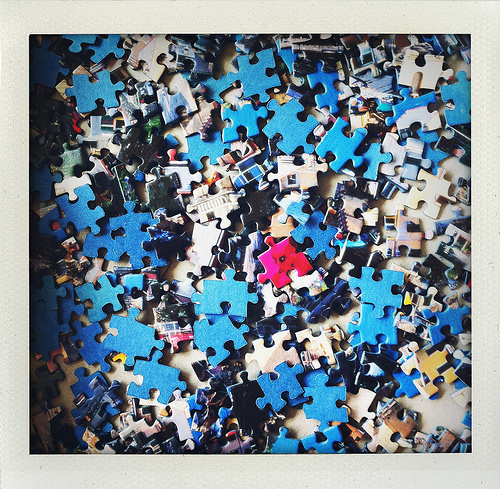Piecing Together Historical Puzzles: Using Imagination and Perspective in University History Seminars
8 November 2013 - 10:23am
 Imagination is an exercise in perspective. Stressing with students a Lowenthal-inspired view of the past as foreign country, with an understanding of the “pastness” of the past and the ways in which past environments are in fundamental ways different (albeit connected to) the world that surrounds us, complicates traditional uses of imaginative exercises in the university classroom. Historical “acting” – that is to say asking students to impersonate historical events and figures from the past – removes some of the critical thinking lenses expected from students studying the past at the post-secondary level. So, is there room for imagination in post-secondary history classrooms?
Imagination is an exercise in perspective. Stressing with students a Lowenthal-inspired view of the past as foreign country, with an understanding of the “pastness” of the past and the ways in which past environments are in fundamental ways different (albeit connected to) the world that surrounds us, complicates traditional uses of imaginative exercises in the university classroom. Historical “acting” – that is to say asking students to impersonate historical events and figures from the past – removes some of the critical thinking lenses expected from students studying the past at the post-secondary level. So, is there room for imagination in post-secondary history classrooms?
Of course!
There is room for imagination in post-secondary history classroom, and this imagination comes from piecing together different parts of an often difficult historical puzzle. Imagination comes from engagement with different historical perspectives. Understanding there are different takes on any historical event, or even that there is debate about what counts as a historical event or isn’t counted as an historical event, is often a revelation to even senior undergraduate students of history.
Strategies to engage with different historical perspectives:
Group Learning:
- Split students into groups to analyze both primary and secondary sources. Students investigate the source based on the questions developed as a class, and then discuss all of them as a class. Sometimes each group will be asked to lead the seminar discussion for a block of 10 minutes based on their reading of primary and secondary sources to make connections to overall course themes.
Engagement with Primary Sources:
- Develop a set of questions for students to use in “interrogating” both primary and secondary sources. I introduced these questions the first week of class and students work with them every week through in-class group work and overall individual class assignments. For primary sources the questions were quite simple: What is the source? Who developed it? Where was it published/displayed? Why was it produced, and for what audience? When was it published? And how does it relate to our class readings and what you already “know”?
Use Multiple Texts Rather Than One Textbook:
- Assigning students readings from a variety of secondary sources (i.e. academic journals and monographs, graphic novels, newspaper articles) help bring in contested and converging viewpoints into the classroom.
We’ve all heard the common phrase that there are two sides to every story. By focusing on perspective, and engaging students with historical sources in imaginative and interactive ways, we quickly realize there are often usually more than two sides, views, voices, factions, groups that inform our views of the past.
How do you accomplish an imaginative use of a multiplicity of perspectives in your history lessons?
Photo: "All Alone" by Nathan M., Flickr, Creative Commons.

